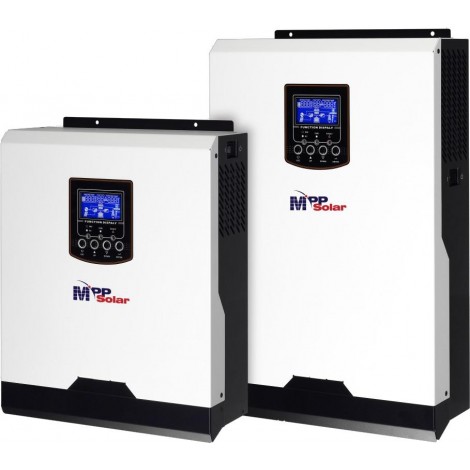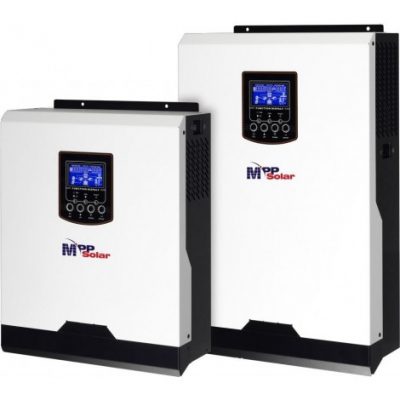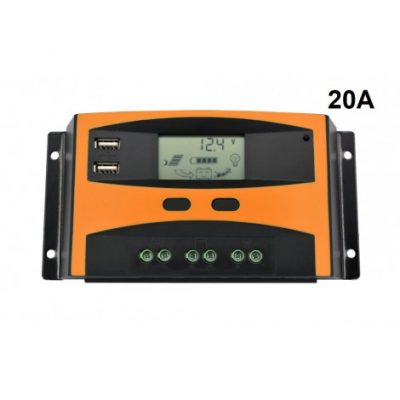Description
En Español
Tecnología PWM
PWM (Pulse-Width Modulation, modulación por anchura de pulsos).
Los reguladores PWM son reguladores sencillos que actúan como interruptores entre las placas fotovoltaicas y la batería. Estos reguladores fuerzan a los módulos fotovoltaicos a trabajar a la tensión de la batería, sin ningún tipo de instalación extra. Por ejemplo, si la batería es de 12 V, los paneles cargaran la batería con una tensión de 12 V.
Cuando se alcanza la etapa de absorción en la carga de la batería, el regulador modifica la intensidad de los pulsos, corta varias veces por segundo el contacto entre los módulos y la batería, evitando que la batería se sobrecargue.
Entre las ventajas de estos reguladores podemos encontrar su sencillez, su reducido peso y su bajo precio.
Los reguladores PWM están disponibles en tamaños hasta de 60 A y tienen una vida útil bastante larga, algunos llevan incorporados un sistema de refrigeración de calor pasiva. Están disponibles en distintos tamaños y para gran variedad de aplicaciones.
En cuanto a los inconvenientes, encontramos que el voltaje nominal debe ser el mismo que el del banco de baterías. Estos controladores tienen una capacidad limitada para el crecimiento del sistema, nada que no puedan solucionar los reguladores MPPT.
In English
PWM technology
PWM (Pulse-Width Modulation, pulse width modulation).
The PWM regulators are simple regulators that act as switches between the photovoltaic panels and the battery. These regulators force photovoltaic modules to work at battery voltage, without any extra installation. For example, if the battery is 12 V, the panels will charge the battery with a voltage of 12 V. When the absorption stage is reached in the charge of the battery, the regulator modifies the intensity of the pulses, cuts the contact between the modules and the battery several times per second, preventing the battery from overloading. Among the advantages of these regulators we can find its simplicity, its low weight and its low price.
PWM regulators are available in sizes up to 60 A and have a rather long service life, some have a built-in passive heat cooling system. They are available in different sizes and for a wide variety of applications.
Regarding the drawbacks, we found that the nominal voltage should be the same as that of the battery bank. These controllers have a limited capacity for system growth, nothing that MPPT controllers can not solve.




